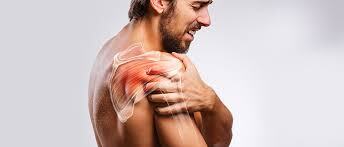Introduction
Stiff and aching muscles can disrupt daily life, making even simple tasks challenging. Whether caused by intense physical activity, poor posture, stress, or medical conditions, muscle stiffness requires effective relief techniques. This guide explores proven methods to loosen stiff muscles, reduce pain, and restore mobility.
Understanding Muscle Stiffness and Aches
Muscle stiffness occurs when muscles become tight, restricting movement and causing discomfort. Common causes include:
- Overuse and Strain: Prolonged physical activity without proper recovery.
- Sedentary Lifestyle: Sitting for long hours with minimal movement.
- Dehydration and Poor Nutrition: Inadequate hydration and essential nutrients can affect muscle function.
- Stress and Tension: Emotional and mental stress contribute to muscle tightness.
- Medical Conditions: Arthritis, fibromyalgia, and muscle disorders can lead to chronic stiffness.
Effective Techniques to Loosen Stiff Muscles
1. Stretching Exercises
Regular stretching improves flexibility and reduces muscle tightness. Effective stretches include:
- Dynamic Stretches: Leg swings, arm circles, and torso twists before workouts.
- Static Stretches: Holding stretches like hamstring stretches, quadriceps stretches, and shoulder stretches for 20-30 seconds.
- Yoga and Pilates: These practices enhance muscle flexibility and relaxation.
2. Massage Therapy
Massages enhance blood circulation and alleviate muscle stiffness. Effective techniques include:
- Deep Tissue Massage: Targets deeper layers of muscle to relieve tension.
- Foam Rolling: Self-massage technique that breaks down muscle knots.
- Trigger Point Therapy: Focuses on releasing specific muscle tightness areas.
3. Heat and Cold Therapy
- Heat Therapy: Applying warm compresses, heating pads, or taking hot showers helps relax muscles.
- Cold Therapy: Ice packs or cold baths reduce inflammation and muscle soreness.
- Contrast Therapy: Alternating hot and cold treatments boost circulation and speed up recovery.
4. Hydration and Nutrition
- Drink Water: Proper hydration prevents muscle cramps and stiffness.
- Electrolyte Balance: Ensure adequate sodium, potassium, and magnesium intake.
- Protein and Omega-3 Fatty Acids: Support muscle repair and reduce inflammation.
5. Regular Physical Activity
- Low-Impact Exercises: Walking, swimming, and cycling promote muscle flexibility.
- Strength Training: Enhances muscle strength and reduces the risk of stiffness.
- Tai Chi and Mobility Drills: Gentle movements improve joint and muscle function.
6. Proper Posture and Ergonomics
- Adjust Workstation Setup: Use ergonomic chairs and maintain correct desk height.
- Practice Good Posture: Keep the spine aligned while sitting and standing.
- Frequent Movement Breaks: Avoid prolonged sitting by stretching every hour.
7. Quality Sleep and Recovery
- Sleep Position Matters: Sleeping on a supportive mattress with proper alignment reduces stiffness.
- Adequate Rest: Allow muscles to recover by getting 7-9 hours of sleep.
- Relaxation Techniques: Deep breathing and meditation alleviate tension.
When to Seek Medical Help
If muscle stiffness persists despite self-care, consult a healthcare provider. Warning signs include:
- Severe pain and swelling.
- Weakness or numbness in the affected muscles.
- Difficulty moving or performing daily activities.
Conclusion
Loosening stiff and aching muscles requires a combination of stretching, massage, hydration, and lifestyle changes. By incorporating these techniques into your daily routine, you can alleviate discomfort, enhance mobility, and improve overall well-being. Prioritize muscle care today for a pain-free tomorrow.
